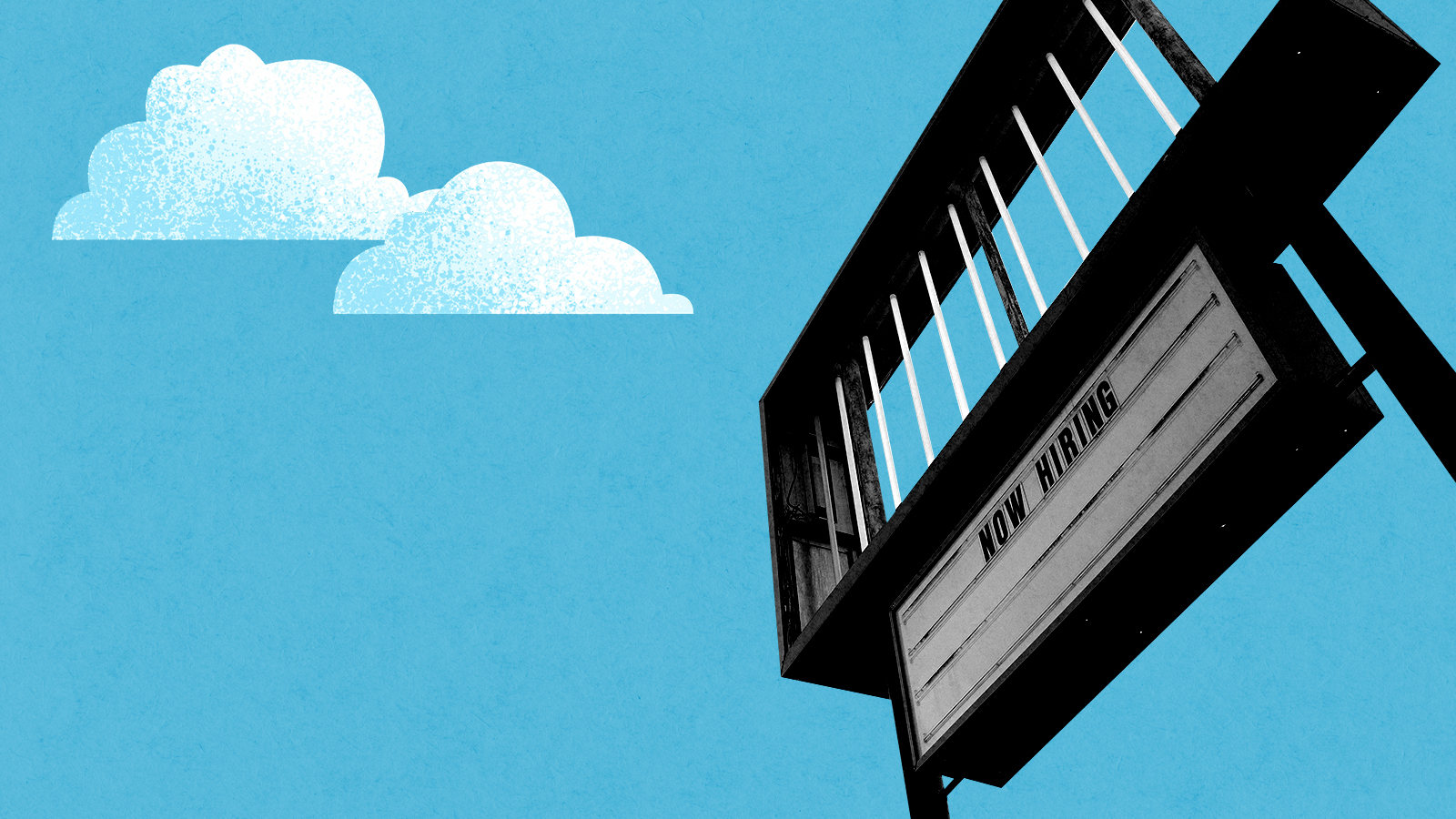Making sense of April's job report
The sharpest opinions on the debate from around the web


The U.S. economy added 428,000 jobs in April, beating the Dow Jones estimate of 400,000 despite high inflation, the Bureau of Labor Statistics reported Friday. Average hourly earnings also grew, a bit below estimates (but behind inflation). That said, the news isn't without downsides: The labor force participation rate dropped to a disappointing 62.2 percent, its lowest in three months, and stock futures fell in the report's wake. Here's what the experts are saying:
Expect the Fed to stay the course on rate hikes
On Wednesday, the Federal Reserve raised interest rates by 0.5 percent in an effort to combat record-high inflation plaguing the nation. But a decent jobs report is unlikely to convince the Fed to "abandon its hawkish plans," Paul Ashworth, chief U.S. economist at Capital Economics, told CNBC. Rather, the central bank's plan "is clearly working," observed journalist Matthew Yglesias. Bloomberg seemed to agree: "The strength of the gains gave a green light to the Federal Reserve to keep on its aggressive path of raising interest rates."
Wage growth and inflation
It seems that at least part of the reason the Fed has been so intent on raising interest rates is to prevent a so-called wage-price spiral, in which price increases beget wage increases that beget prices increases again. Per April's report, wages rose 5.5 percent annually, but average hourly earnings only increased 0.3 percent last month (that's compared with 0.5 percent in March). Though fast wage growth is better for workers (particularly when prices are so high), "it has also been threatening to keep inflation elevated, both as strong demand persists and as companies raise costs to cover climbing labor expenses," The New York Times writes. This month's slightly-moderated increase might therefore prove "welcome news" for the Fed "if it lasts."
The Week
Escape your echo chamber. Get the facts behind the news, plus analysis from multiple perspectives.

Sign up for The Week's Free Newsletters
From our morning news briefing to a weekly Good News Newsletter, get the best of The Week delivered directly to your inbox.
From our morning news briefing to a weekly Good News Newsletter, get the best of The Week delivered directly to your inbox.
Jason Furman, chair of the Council of Economic Advisers under former President Barack Obama, agreed: "Nothing in this will or should change what the Fed does in June, but is another sign that the underlying inflation trend may be lower than I thought and coming down."
Economist Mohamed A. El-Erian said the strength of April's report does not seem to be an immediate threat to the risk of a wage-price spiral. "No matter how you look at it," added Economic Policy Institute's Elise Gould, "nominal wage growth is moderating (and decidedly not accelerating)." "We can keep labor markets tight without feeding inflation," she continued.
Not yet 'mission accomplished,' but…
April's growth is positive — but it's "not yet mission accomplished," noted Economic Policy Institute President Heidi Shierholz. There's a "huge hole" in the labor market, but "that gap is closing rapidly," she said.
The economy is at a "pivot point," suggested Politico's Chief Economic Correspondent Ben White. That is, we're seeing "recovery with a lotta momentum," added University of Michigan economics professor and New York Times contributor Justin Wolfers. "It's hard to see where all that recession talk is coming from." If you're not pleased by April's jobs report, "you're a professional grump," he added.
A free daily email with the biggest news stories of the day – and the best features from TheWeek.com
And at least "for now," said New York Times economics reporter Ben Casselman, "I'm not reading too much into the one-month drop in the labor force." When taken alongside the last six months, "the labor force is growing, but not quite as quickly as we thought (or had hoped). Not great, but not enough to set off major alarm bells given other data."
Brigid Kennedy worked at The Week from 2021 to 2023 as a staff writer, junior editor and then story editor, with an interest in U.S. politics, the economy and the music industry.
-
 Received a gift card this holiday season? Here’s how to maximize it.
Received a gift card this holiday season? Here’s how to maximize it.The Explainer Make the most of your present
-
 ‘Lumpy skin’ protests intensify across France as farmers fight cull
‘Lumpy skin’ protests intensify across France as farmers fight cullIN THE SPOTLIGHT A bovine outbreak coupled with ongoing governmental frustrations is causing major problems for French civil society
-
 The best books of 2025
The best books of 2025The Week Recommends A deep dive into the site of a mass shooting, a new release from the author of ‘Atonement’ and more
